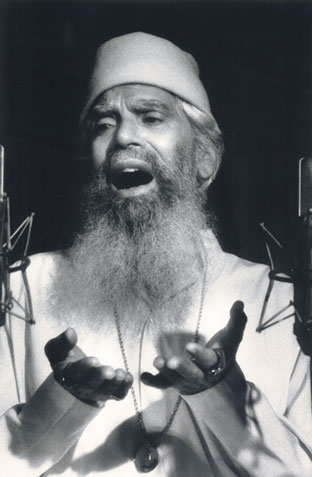 The latest issue of The Wire has an excellent section on bass in contemporary music and theory, which includes two pieces from me, one on UK soundsystem Aba-Shanti and their heavy vibrations, the other on the deepest bass sound in the universe, emitted from a black hole. I also suggested a piece on the humming sounds of Putumayo shamanism, as described by my friend and teacher Michael Taussig, and the following piece about plumbing sonic mental depths, as described by another teacher of mine, Sri Karunamayee:
The latest issue of The Wire has an excellent section on bass in contemporary music and theory, which includes two pieces from me, one on UK soundsystem Aba-Shanti and their heavy vibrations, the other on the deepest bass sound in the universe, emitted from a black hole. I also suggested a piece on the humming sounds of Putumayo shamanism, as described by my friend and teacher Michael Taussig, and the following piece about plumbing sonic mental depths, as described by another teacher of mine, Sri Karunamayee:
“In an interview conducted in Delhi in 2001, the Indian singer and philosopher Karunamayee, a long term student of Hindustani raga singer Pandit Pran Nath, teacher of La Monte Young, Terry Riley and many others, explained to me how she first learnt to sing: “At the age of six, good teachers were coming and teaching my brother and sister. But I was very small and it was not considered necessary for me. But I had a gift. Whenever I heard some music it just became ingrained in me. My consciousness of silence kept my slate very clean. Most of the time I enjoyed the silence, even when everyone was talking, I felt a kind of echo of the silence, as if I was in a tunnel, untouched by any of it. Whatever I heard was imprinted, and I found myself singing in that way. Nobody cared. I would just put my head down and start going sa-re-ga-ma. Sometimes I would hear my sound very clearly. I would think: it may be that my sound is not heard, but I can think of music! And holding that thread, not of the sound that I’m making, but of the concept of sound, with that I would go up the scales for many octaves. And then I would say, alright, let me come down, keeping the thread, and I would find my voice becoming audible, very clear, and then deep, and then less clear, more unheard, but I could go deep also. This was my favorite exercise. I would go higher and higher like the birds at noontime in the sky. Then I would imagine that somebody is taking water out of a well. You can go as deep as you want. There is no limit on either side, up or down. So I experienced infinity in height and depth through sound and silence. It gives you control over your mind. A thread of sound. “

